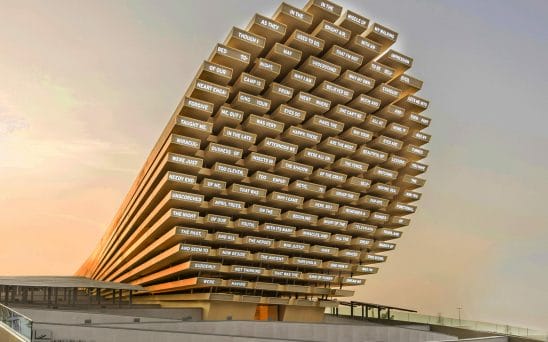Thomas Heatherwick in his UK Pavilion installation at the 2010 Shanghai Expo, preserved a large amount of the world’s threatened plants in order to draw attention to their plight. Heatherwick, a British designer, was aware of the many striking architectural and artistic exhibits at the Expo. However, his Seed Cathedral stood out as a masterpiece in its own right. Even today, many people remember his striking building.

Seed Cathedral is not a housing project, instead it is a symbolic race that aims to portray the urgency with which environmental issues should be addressed. If examined closely, the walls of the building reveal more than 250,000 seeds housed within 60,000 acrylic rods.
Designed and built at the cost of £25 million, this work won the gold medal for best pavilion design at the International Exhibition. Located in Shanghai, it drew more than a million visitors during its six-month run. The Seed Cathedral is no longer in existence, but its message of environmental conservation has spread to schools, the World Expo Museum, and some of the seed packets have been sold for charity.

The Seed Cathedral, created by Heatherwick Studio, was designed to explore the relationship between big cities and the environment. This project was inspired by the Kew Gardens’ Millennium Seed Bank Partnership, whose mission and goal is to collect seeds of 25% of all the world’s plant types by 2020.
The design incorporated architecture and landscaping when it was ready for exhibition. The installation is composed of 60,000 acrylic optic fibers, all 25 feet long. These rods create the illusion of a house, although the original design called for a softer piece that could move.
Heatherwick Studio, the design firm behind the Olympic Cauldron, is responsible for this architectural wonder. The rods mimic the action of wheat stalks when the wind blows through them. Not considering that the design would be brought down shortly after being put together, Heatherwick aimed to make the seed cathedral one of the main attractions at Expo 2010 Shanghai China, ensuring that visitors had enough space to move around it and remain relevant even in events and programs it does not fit.
At the Seed Cathedral, in the darkened inner sanctum, thousands of fiber optic filaments form a seemingly hovering galaxy of slim vitrines containing a vast array of embedded seeds. Those seeds have been sourced in China by the Kunming Institute of Botany, a partner in Kew Royal Botanic Gardens’ Millennium Seed Bank Project.The visitors will pass through a tranquil, contemplative space surrounded by the tens of thousands of tiny lights illuminating the seeds.

The filaments are particularly responsive to external light conditions, so the unseen movement of clouds above the Seed Cathedral are experienced internally as a fluctuating luminosity. The studio’s intention is to create a reverential atmosphere around this formidable collection of the world’s botanical resources; a moment of personal introspection in a powerful silent space.
The Seed Cathedral’s fiber optic array creates an ever-changing halo effect around the high structure, with fiber optic filaments rippling and changing texture and reflectivity in the gentlest wind.The undulating external surfaces of the Seed Cathedral create a delicate connection between the ground and the sky.
The green landscape surrounding the Seed Cathedral was designed to extend the building’s texture. A special artificial grass has been developed to act as a public space for visitors to rest. A canopy covers a naturally ventilated entrance and exit sequence for the Seed Cathedral.




















